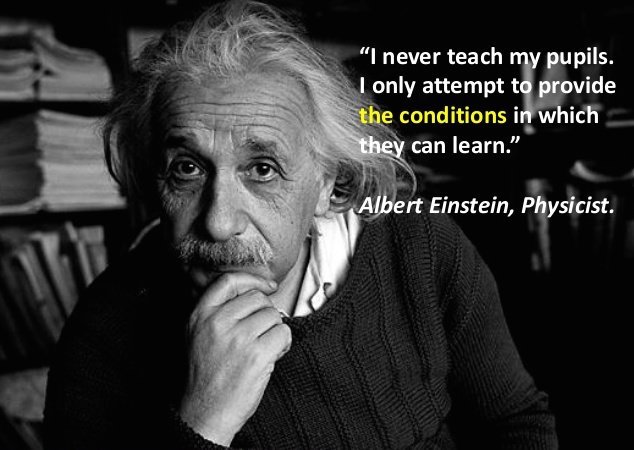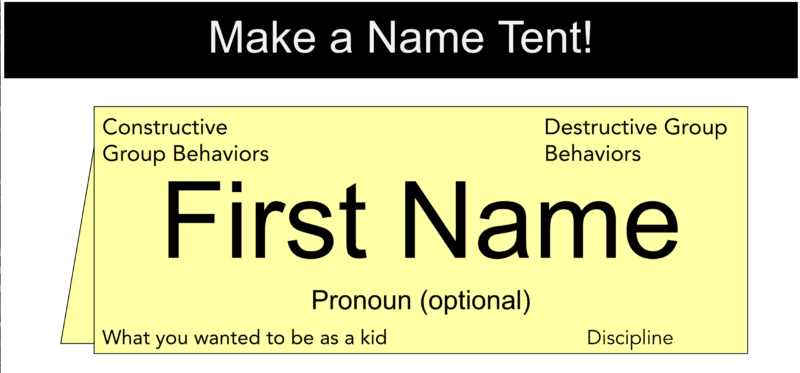WHY IS THIS IMPORTANT?

The first day of class sets the tone for the quarter and is your introduction to your students on who you are and how you teach. It also provides an opportunity to set the expectations for the course – grades, attendance, schedule. But beyond the logistics of the course, the first day is a chance to begin to create a learning community.
Please take a moment to review the strategies and tips below. You may already be implementing some of these or this may be the first time you are teaching and these ideas are new. Wherever you are in your own teaching development, we encourage you to try at least one new thing each quarter to make your class a bit more welcoming and inclusive.
Strategies to Create and Sustain Community in your Classroom
Review the following strategies that you can implement on the first day of class to help create community and foster an inclusive classroom environment.
Set community agreements for mutual respect in discussions. Develop them together from scratch with your students or start with some suggestions and engage students in conversation.
Examples:
- Be present
- Assume good will
- Identities stay, learning leaves
- Listen first to understand, not to judge
- Challenge the idea, not the person
- Be open to challenges as an opportunity to learn something new
- Be aware of the space you are taking up
View additional suggestions on setting up Community Agreements here.
Tips on Introducing Yourself
As faculty and instructors, it can be easy to get caught up in the busyness of our work and lives. We may rely on our assumptions of what students know or don’t know about us and the course(s) we teach. However, the first day of class provides a perfect opportunity for you to present yourself as a human, as a strong representative for inclusion and equity for your department and program, and to communicate a sense of belonging to your students.
A few things to keep in mind:
- Students are likely intimidated by you because of the prestige of UCLA and your status as their instructor. Sharing a bit about who you are can help ease some of them intimidation and help them feel a bit more comfortable approaching you.
- Many students have anxiety and waver on their own sense of belonging at UCLA, particularly when they struggle in a course. Sharing your own struggles in academia can help normalize these experiences and promote a growth mindset.
- Students in your class likely do not know each other – especially if you are teaching a course to first year students, although this is the case in many UCLA classes for transfer students and as students change majors, etc. Allow some space for “getting to know each other” and model the types of information that they might want to share with each other.
Each instructor may do this in different ways such as making a video to post in the course, presenting slides on your professional background, sharing varying degrees of personal information about your life and journey, or sharing personal narratives of your own experience in the discipline- including times you yourself have struggled and overcome challenges.
The following worksheet offers some reflection points to consider as you craft your personal introduction:
Name tents: Have students create a name tent out of a manila folder, by folding it into four equal parts and tucking the two ends together. This results in a triangular shaped named tent. Students can write their names in the center and additional information such as pronouns, major, year in college, around the name tent. These can be collected by Teaching Assistants and also used to take attendance during lecture and discussion sections.
You can consider having students add their Constructive and Destructive Group Behaviors or use other “get to know you” questions.
Stand up/Sit Down (can work well in a large lecture hall): This activity can be a great way for students to see similarities across the class and can work well right before small group introductions. Ask them to stand or raise their hand if the following is true for them:
-
- Do you have a pet at home (perhaps back home with family while you are here at UCLA)?
- Have you ever lived outside of the US?
- Do you play a musical instrument?
- Do you play a sport here at UCLA?
- Have you been swimming in the ocean in LA yet?
- Do you ski or snowboard?
- Do you have siblings at home?
- Can you drive a stickshift car?
- Are you still figuring out what your major will be?
- (Add any additional prompts)
- “Now that we’ve learned a little bit about each other, let’s take 10 minutes to introduce yourself to 3 other people sitting near you.”
Discussion starters: Post a discussion question on a slide at the beginning of class to help facilitate small group bonding. Topics could include things like:
-
- Favorite recipe/food/restaurant/place
- Use three words to describe yourself
- Interests (Jobs, hobbies, research labs, student clubs, etc.)
- What you wanted to be when you grew up
- Pictures of their recent craft/food project/animals
- Three things your group has in common (use this for team names!)
- Famous figure (living or dead) would you want to spend quarantine with
Online Discussion Forums:
- Have fun, low-stress discussion threads: “Pets of [class]” thread, favorite recipes, recommendations for things to do in LA, etc.
- Use discussion tools like Slack, Discord, or GroupMe
-
-
- Allow space for students to ask and answer each other’s questions
- Encourage low-key discussion/interaction on the group you’re a part of by asking questions/sharing your own reactions to readings/etc.
-
Consider giving a “Course Tour” in Bruin Learn. Share your screen and walk through weekly modules, announcements, and overall course organization. Make course expectations clear and keep materials organized.
Set communication guidelines and communicate consistently
-
-
- For example: email reminders for homework will be sent on Tuesday evenings
-
Create class discussion guidelines together
-
-
- Encourage students to think critically about what they need from each other and from the instructor
- Agree on what participation will look like and how to be held accountable
-
Communicate your grading schema and what, if any, adjustments may occur to “curve up”. Explain policies for asking for a regrade or other assignment questions.
Assign students to groups (these can be called “Learning Pods”, “Study Groups”, or another catchy name). Give students an opportunity to exchange contact information, create a Slack space for their group, start a shared Google doc, or other strategies of their choosing to stay connected during the quarter.
How many students per group? 4-6 is a good size!
Do I need a group project? Assigning a group project can be a great learning experience for many reasons, but even if you do not have a group project as part of the course you can still support students in connecting with each other by creating groups for them at the beginning of the quarter.
Why is this important? Keep in mind that some students are very comfortable networking with others and forming supports for studying with peers, but others are not. It will take you just a little time to help foster peer community by creating these groups and for some of your students the impact will be quite large.

